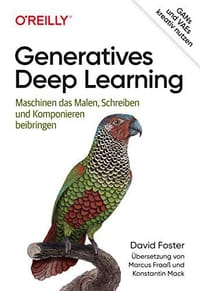Generative modeling is one of the hottest topics in artificial intelligence. Recent advances in the field have shown how it’s possible to teach a machine to excel at human endeavors—such as drawing, composing music, and completing tasks—by generating an understanding of how its actions affect its environment.
With this practical book, machine learning engineers and data scientists will learn how to recreate some of the most famous examples of generative deep learning models, such as variational autoencoders and generative adversarial networks (GANs). You’ll also learn how to apply the techniques to your own datasets.
David Foster, cofounder of Applied Data Science, demonstrates the inner workings of each technique, starting with the basics of deep learning before advancing to the most cutting-edge algorithms in the field. Through tips and tricks, you’ll learn how to make your models learn more efficiently and become more creative.
Get a fundamental overview of deep learning
Learn about libraries such as Keras and TensorFlow
Discover how variational autoencoders work
Get practical examples of generative adversarial networks (GANs)
Understand how autoregressive generative models function
Apply generative models within a reinforcement learning setting to accomplish tasks
David Foster is the co-founder of Applied Data Science, a data science consultancy delivering bespoke solutions for clients. He holds an MA in Mathematics from Trinity College, Cambridge, UK and an MSc in Operational Research from the University of Warwick.
David has won several international machine learning competitions, including the Innocentive Predicting Product Purchase c...

